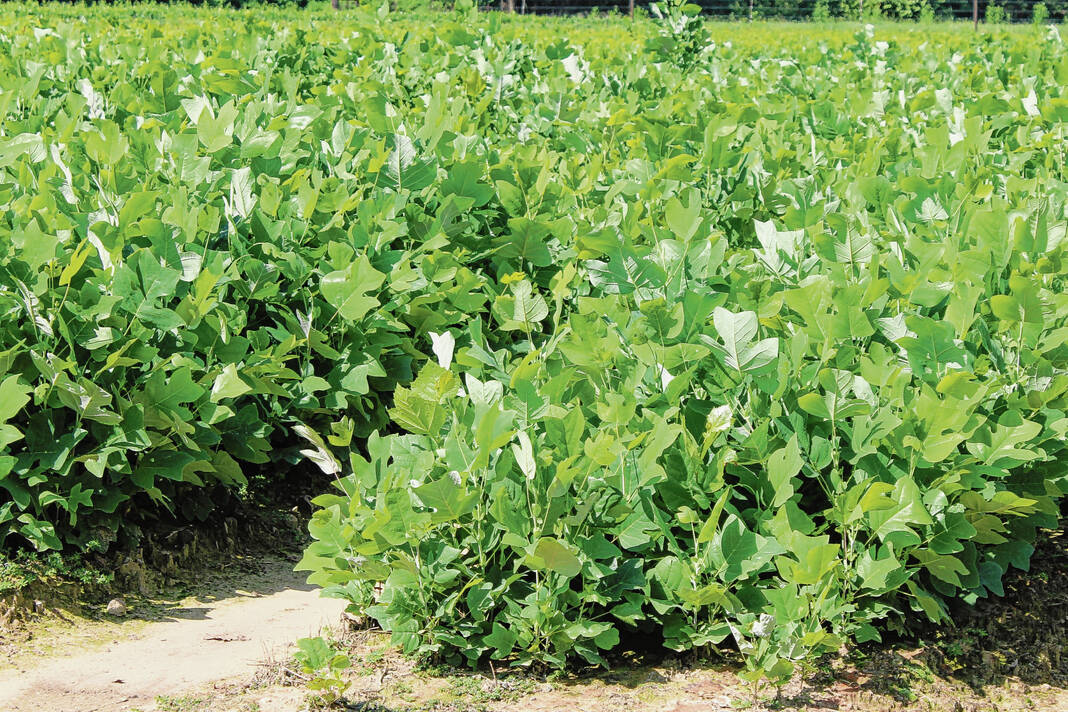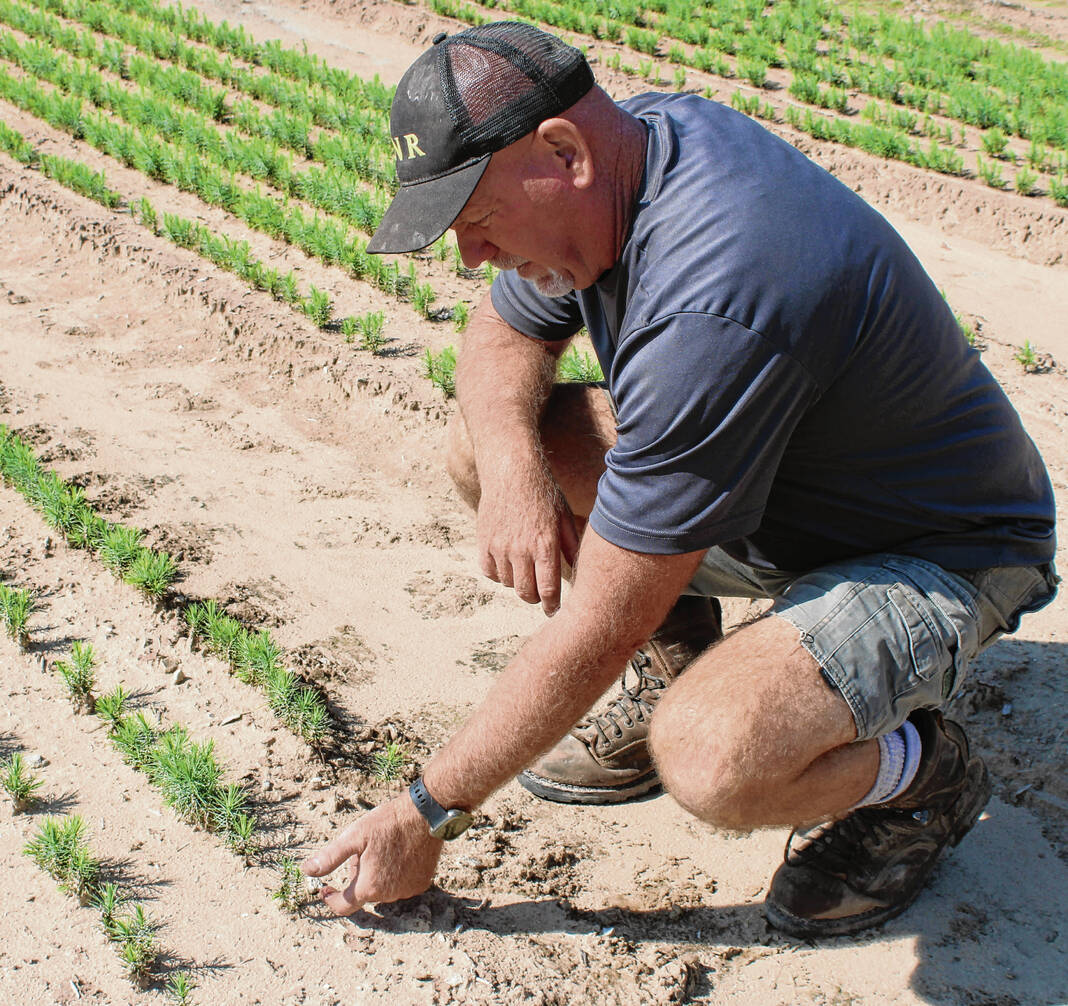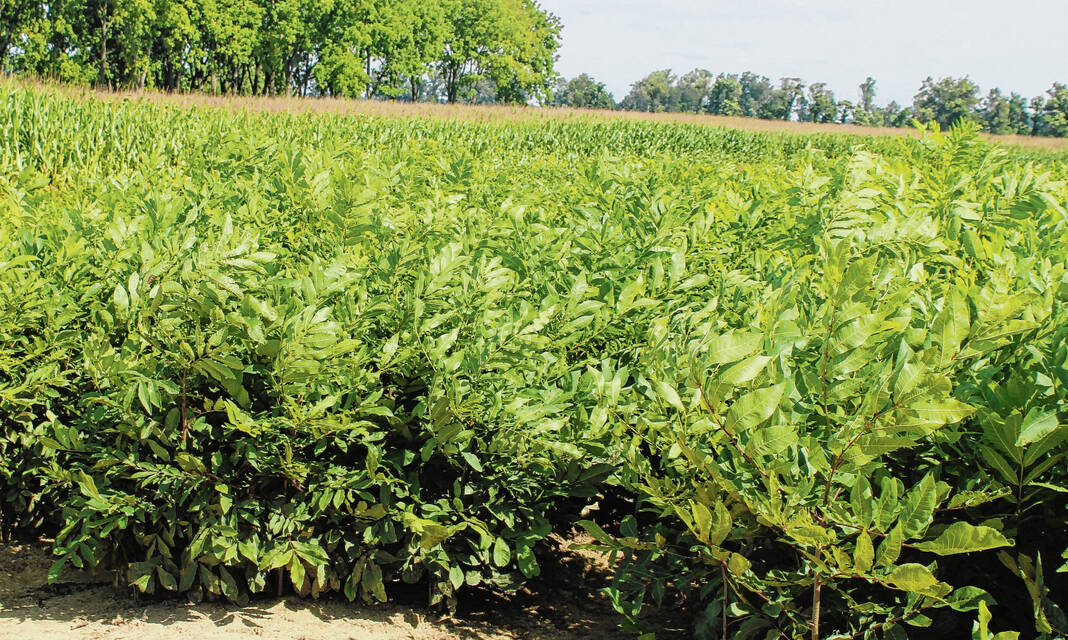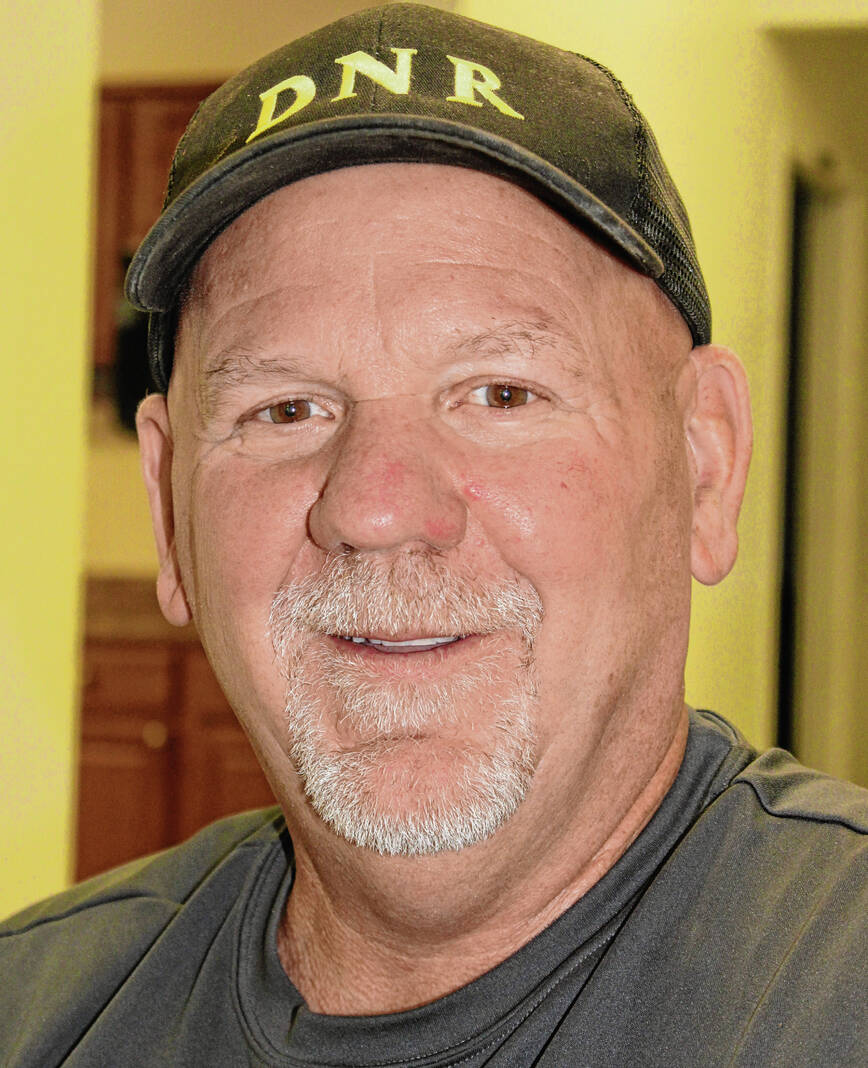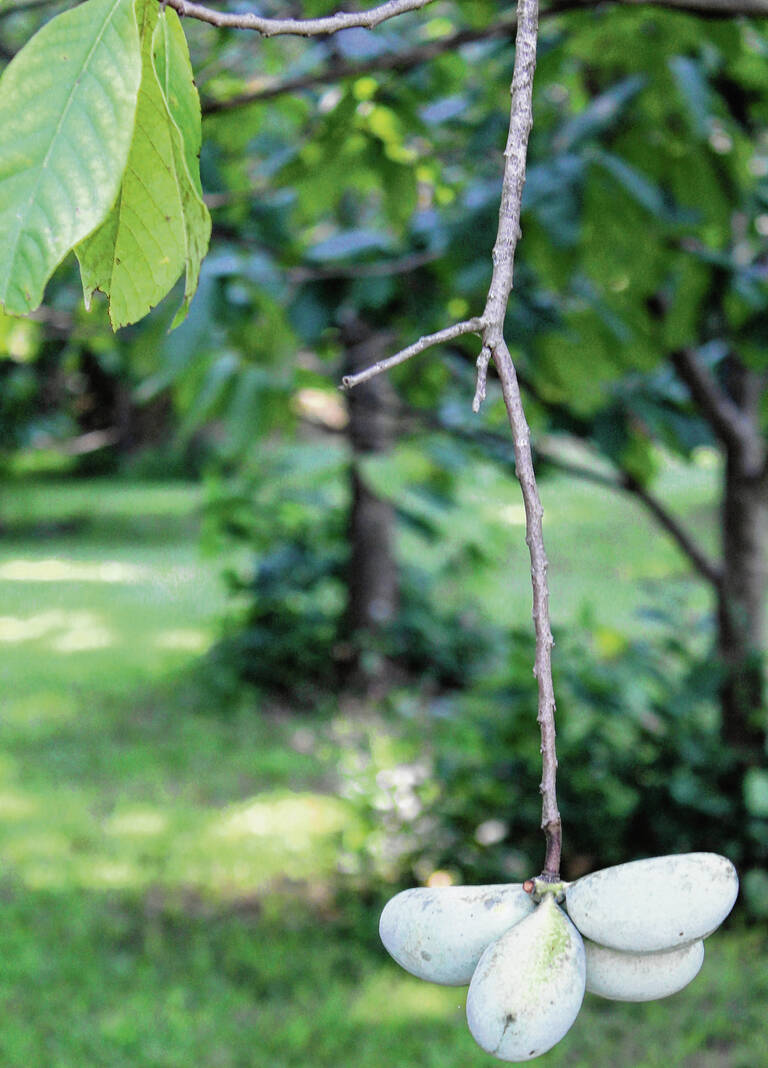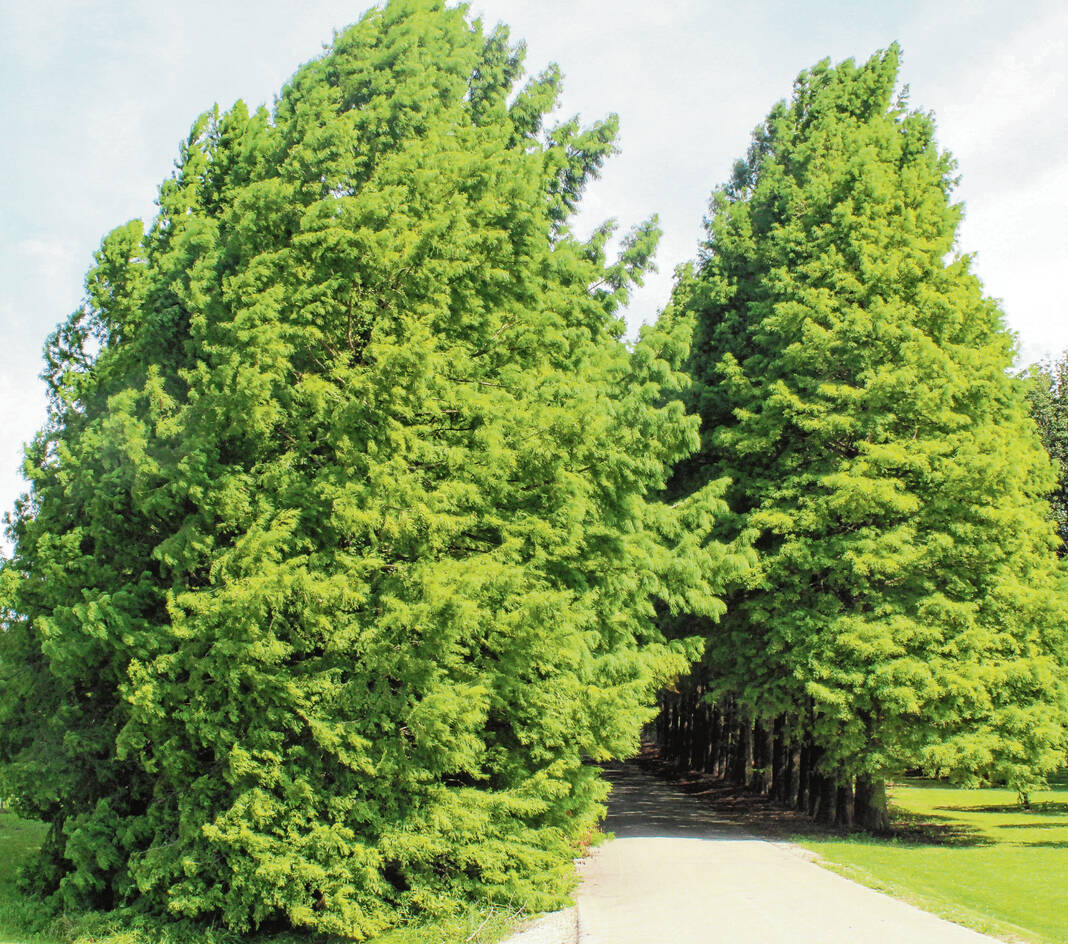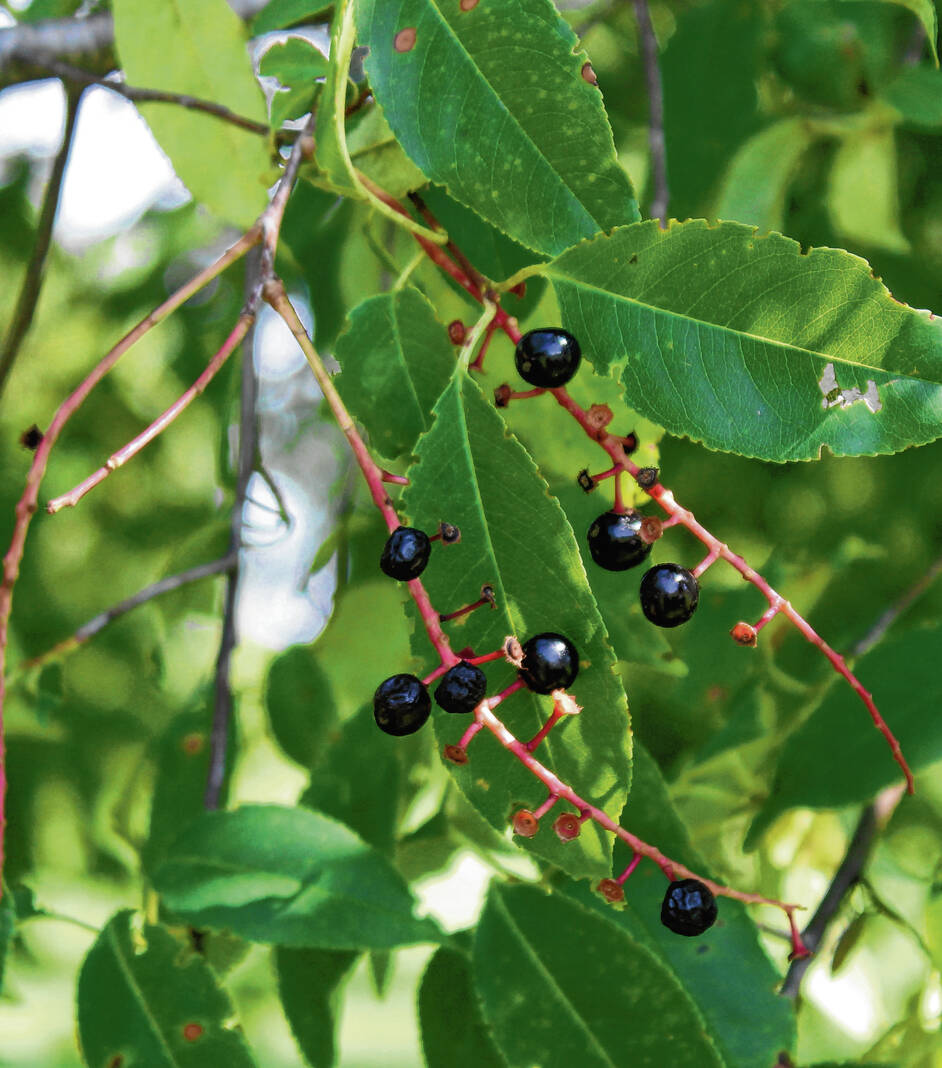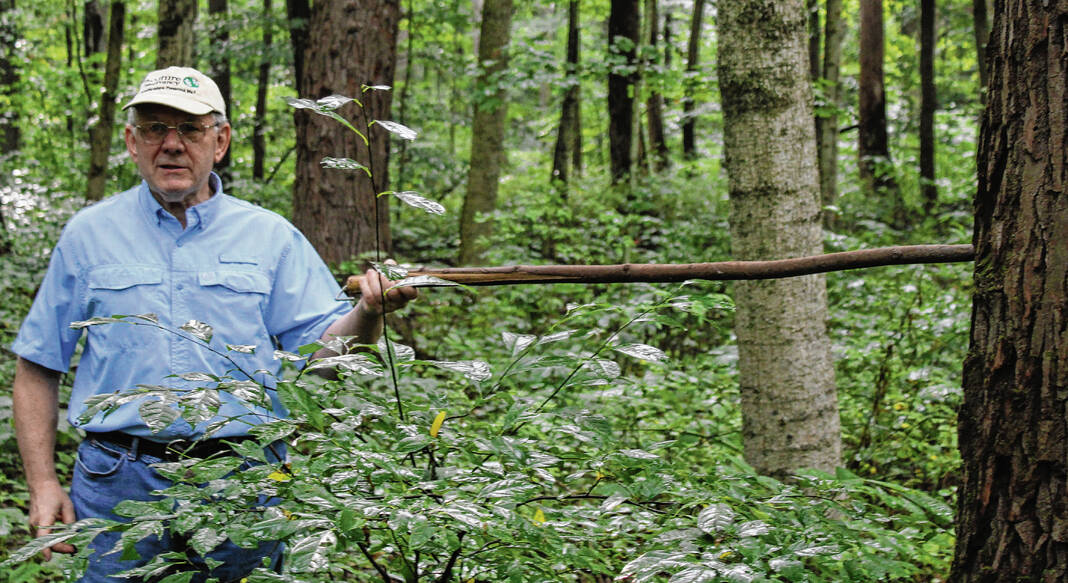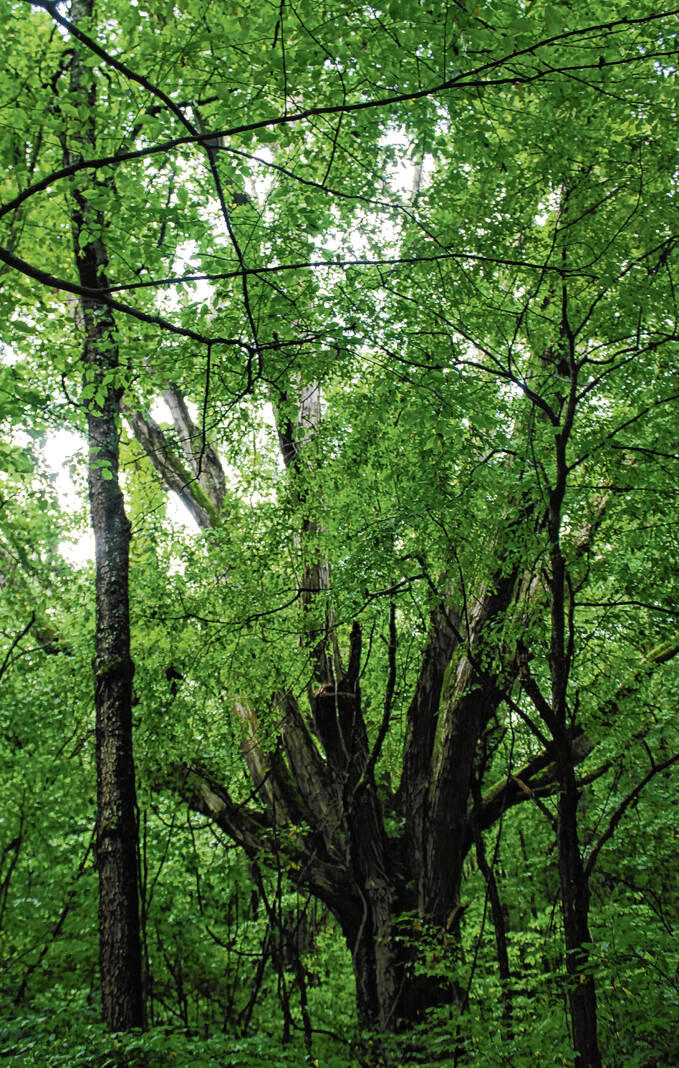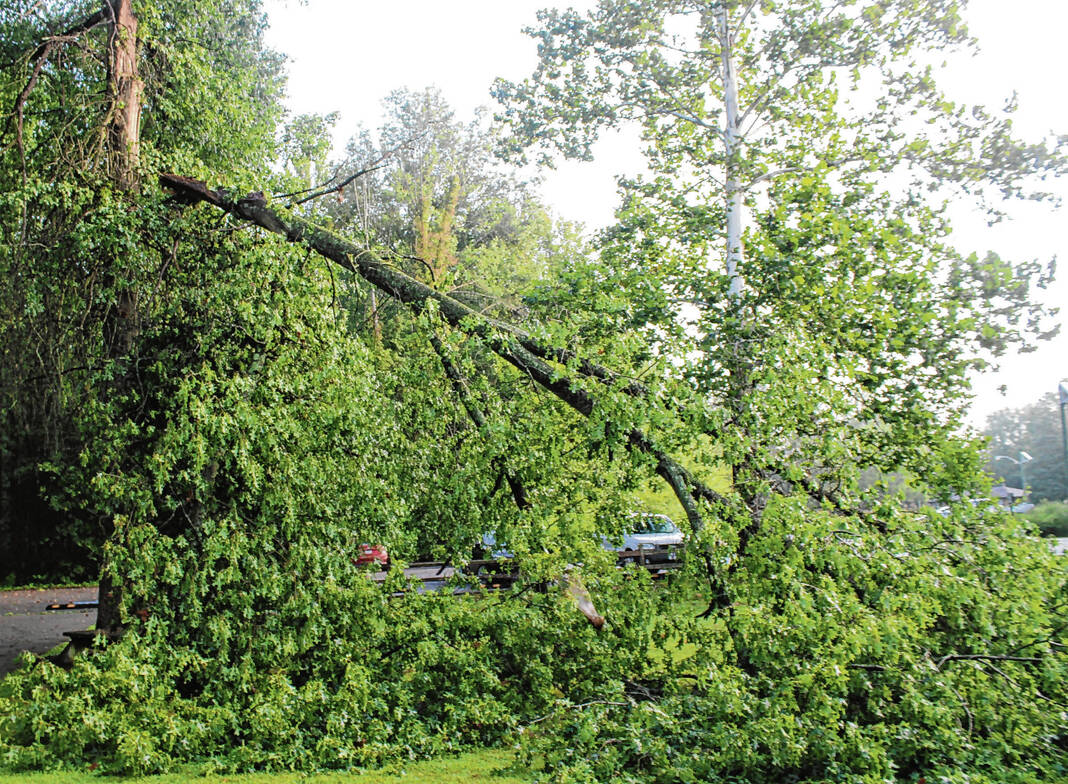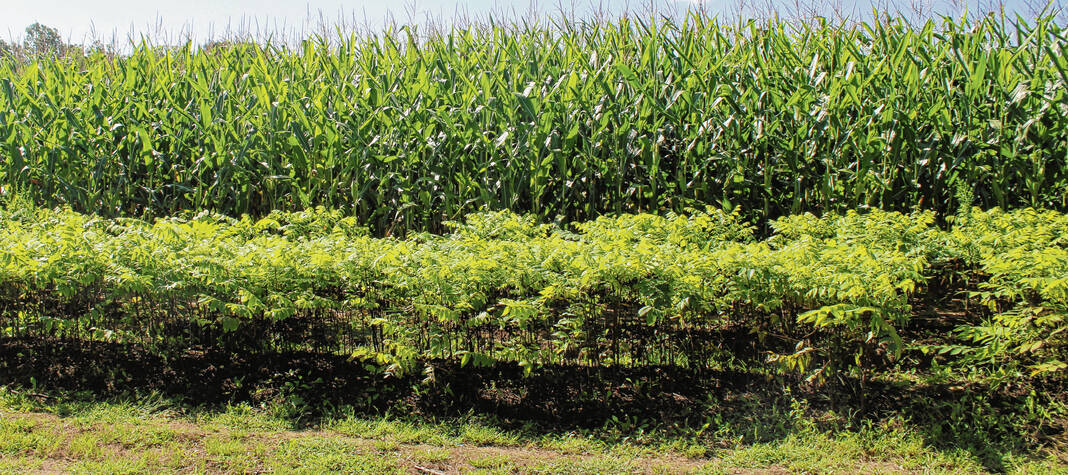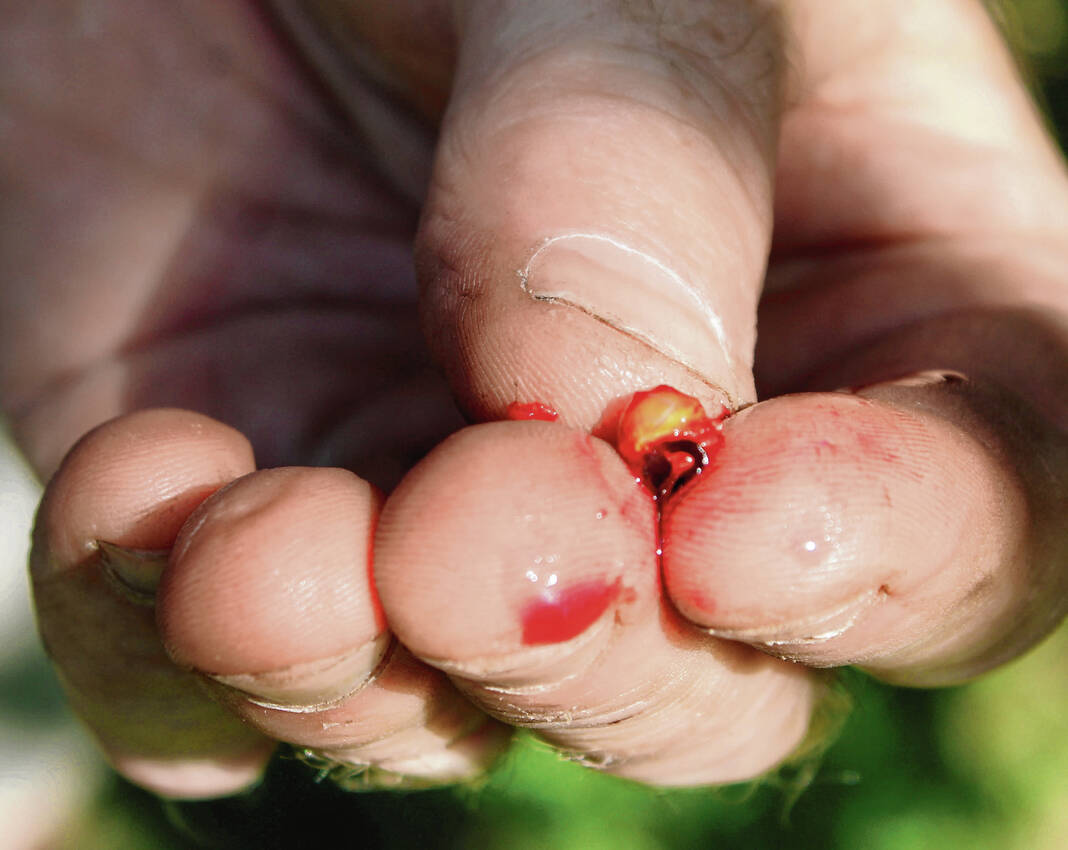VALLONIA — They are shin-high, waist-high and head-high, trees of the present growing and maturing into trees of the future.
They are Indiana replacement trees for the trees bulldozed for buildings, imploded by lightning, destroyed by high winds and trees that will fill in flatland or former farmland.
White pine and black cherry seedlings, black oak and pecan, swamp chestnut oak and sycamore, white oak and sugar maple are among the greenery spread over the 250 acres of the Indiana Department of Natural Resources Vallonia Nursery.
The nursery is a tree manufacturing factory, producing about 2½ million trees a year for planting by state forestry officials and individuals.
The person with the greenest thumb of all in the Hoosier State may well be Gov. Eric Holcomb, who in his 2020 state of the state address announced a program to plant 1 million trees within five years.
This spring, when 253,400 seedlings were planted on state land, the initiative had reached 964,900. It’s scheduled to reach the 1 million goal next spring.
“One million of anything is a lot,” Jack Seifort, director of IDNR’s Division of Forestry, said of making the magnitude understood by the public. “I’m not sure they can, whether it is trees or dollars in a budget.”
At the time of the American Revolution in 1776, the country was a nation of trees. Then followed population growth to the 340 million of today, construction of cities, creation of suburbia and as a byproduct of civilization creep, the elimination of millions upon millions of acres of timber.
The governor’s aim is to increase the state’s tree canopy.
“That extra timberland will perfectly complement our $100 million renovation to our incredible memory-making state parks,” Holcomb said in January 2020.
In these divided political times, it is almost impossible to introduce any type of government program that does not draw complaint, but being an advocate for trees seems less controversial than rooting for your school’s teams.
“We’ve never had anybody say it’s a bad idea,” Seifort said. “We’ve always done planting of trees, but we hadn’t done it on this scale.”
Trees have longer lifespans than humans, and seedlings planted in a new home will take decades to reach what might be termed adult heights of 50 or 100 feet, long after the planters have passed on.
“We’re long term,” Seifort said. “It’s pretty satisfying, especially when you go back and look at it years later.”
Vallonia Nursery
He knows he will never see his trees at the apex of growth, but sometimes driving around Indiana, Bob Hawkins crosses paths with trees he is sure came from Vallonia.
“I’ll go, ‘I bet that came from the nursery,’” said Hawkins, 60, who has spent 36 years at the nursery. “I’ve been doing something good for the environment.”
The slow-growth trait of trees means people who buy them for private property are really doing so for their grandchildren.
“You do have to be patient,” Hawkins said.
Hawkins knows the grounds like his own backyard. Of the 250 acres at Vallonia, situated in rural Jackson County, some 150 of them are irrigated for seedlings.
On a sunny morning tour, Hawkins pointed out acreage planted with corn, which is not on the nursery menu. The corn fills in gaps on the land and provides more nutrition to the soil.
Various trees grow at different paces, and no seedling is around for more than three years.
The tulip tree is the Indiana state tree and is represented at Vallonia. So is the paw paw tree, which produces plump fruits and is nicknamed the Hoosier banana.
“It’s very sweet,” Hawkins said. “The wildlife will eat that, too.”
Black cherry trees are accounted for on the premises, as well.
“They’ll produce the seeds, and we’ll come out and collect them,” Hawkins said.
If a tree falls at Vallonia, everyone knows it. Always under surveillance, the trees are matured as much under the hand of man, not merely nature.
“We had a lot of rain this spring, so the plants are responding well,” Hawkins said. “Here, they’re well taken care of. When they need water, we water them.”
Not every tree on Vallonia grounds is a baby. There is a corridor of bald cypress, which happens to be Hawkins’ favorite tree because of its stately manner, that were probably planted 35 to 40 years ago and are now 40 or so feet tall and other grown trees ringing the property.
“Some people like to see what a tree is going to look like when it’s older,” Hawkins said.
The demand for different trees is uneven.
“Our biggest seller is probably red oak,” Hawkins said. “Then white oak, black walnut and white pine. Sometimes, people come and they don’t know what they want. They say, ‘I just want some trees.’”
The current ordering season began in early October and continues through May 1, 2024. The price list is based on 100 seedlings per order with red pine costing $43 and paw paw 2-0 $36 with many others also available in that general cost range.
Hawkins said prices at Vallonia are basically cheaper than at private nurseries.
“We can’t make a profit. We’re like farmers,” Hawkins said. “But we’re farming trees instead of corn or soybeans.”
The Anne Frank Tree
Hawkins has proudly played a part in the planting of saplings from the Anne Frank Tree.
A lesser-known aspect of the broader story relayed in “Diary of Anne Frank,” as the 15-year-old German-born Jewish girl and her family hid for two years from the Nazis in occupied Amsterdam, The Netherlands, during World War II, was that she could see a horse chestnut tree from an attic window and it made an impression on her.
“From my favorite spot on the floor, I look up at the bare chestnut tree, on whose branches little raindrops shine, appearing like silver, and at the seagulls and other birds as they glide on the wind,” she wrote in a Feb. 23, 1944 entry. “When I looked outside right into the depth of nature and God, then I was happy, really happy.”
Frank died in a concentration camp in early 1945. Her journal became a worldwide bestseller when her father, Otto, oversaw its publication, and it endures in print today. Frank mentions the tree in the book three times.
The tree took on a special cache and was carefully preserved. Debilitating moth damage and fungus, however, took a toll, and in 2007, officials ordered it chopped down. An outcry saved the tree, but a storm in 2010 brought down the tree anyway.
Following that, 13 saplings were distributed across the United States to museums, parks and other institutions. The first such sapling was planted at The Children’s Museum of Indianapolis in 2013.
“They wanted to keep that tree alive,” Hawkins said. “We ended up with some of them (saplings).”
Hawkins, as nursery supervisor, accompanied Anne Frank Tree horse chestnut saplings to the U.S. Capitol grounds in Washington, D.C., the United Nations in New York and to the Anne Frank Center in South Carolina.
“I took those trees out there to be planted,” Hawkins said.
He said Vallonia is working on grafting new horse chestnut trees from the original Anne Frank Tree to keep the Anne Frank memory alive.
A tree haven
For a time, even Muscatatuck National Wildlife Refuge in Seymour was a customer of the Vallonia Nursery, Park Ranger Donna Stanley said.
“Mostly oaks and hickory,” said Stanley, who said she also has bought tree saplings from Vallonia as a private consumer. “The idea was to fill in gaps in the forest. You get 100 of the most beautiful trees.”
Even forest-like and woodsy land sometimes needs replenishment. However, Muscatatuck’s 7,800 acres still feature other trees experts have identified as special for their form, age and size.
In the book “Magnificent Trees of Indiana” by Carroll D. Ritter, there are several mentions of Muscatatuck. Most are described by refuge tree expert volunteer David Coppert of Columbus.
Recently, Coppert led a short refuge hike showing off notable park ferns in the park but also a swamp chestnut oak. The tree, one of the largest of its kind in the state, is 6 feet around (Coppert measured it), about 115 feet tall and is approximately 300 years old.
Coppert said Muscatatuck has 67 native species of trees, and he personally has identified a dozen non-native species. The land contains ash, hickory, oaks, paw paw, pecan and walnut.
Some might believe trees were all named by scientists or carried earlier Native American names. Coppert said not so.
“Many of the common names of trees were given by lumbermen,” he said.
When trees fight back
The love of trees may seem boundless, but trees are not always friends with people. Most often, that is when they cause damage, when they become victims of hurricanes or lesser wind and rain events and fall to the ground, killing or injuring people or property.
In late August, Stanley came to work at Muscatatuck and was confronted by a very large tree limb still loosely hanging to the body of a tree while extending across the visitor center lawn.
She was not certain when the tree was harmed, “Last night?” she postulated since the area had been hit by a storm.
Jacob Dunn, athletic director at Crothersville High School who has a home in Scottsburg, had his own tree fright earlier in August.
On a bad-weather evening, Dunn dozed off late but was abruptly awakened by a very loud bang at 1:30 a.m.
“It was a thud,” Dunn said. “I thought, ‘What is going on?’”
He climbed out of bed, looked out from the front porch and didn’t see anything amiss. Since it was a one-off, he went back to bed.
The next day, returning from work, he approached from the rear, only to see his maple tree leaning against the house on an air conditioning unit. In a good-luck tumble, the tree did no real damage other than knocking out Dunn’s Wi-Fi connection and KO’ing a weather vane.
Within hours, the electric company showed up, Internet repair people were onsite and compatriots whipped out a chainsaw and turned the dead tree into wood chunks suitable for trash pickup.
Offered the tip of how to shop for a new tree at Vallonia, Dunn said he is not in the market.
“I don’t want another tree,” he said.
The millionth tree
Dunn may not want to add a new tree, but the state of Indiana is still working its way to 1 million new ones. Seifort said being about 35,000 short of the goal will make it easy to reach the predetermined planting goal in early 2024.
McDonald’s, the hamburger giant that made it a thing to count the number of burgers sold, gave up on an accurate count and now announces on outdoor signs “Billions and billions sold.”
Consistent with such general business practices of making a big deal of a magic number customer, though, whether it be the 100,000th or the millionth, it naturally behooves Indiana to draw attention to the millionth tree planted by the Department of Natural Resources as it fulfills Holcomb’s pledge.
There is such a plan in place, Hawkins said. When the next planting season comes around, the turn will come for the special tree.
“The millionth tree will be planted at the capitol,” Hawkins said.
The 1888 Statehouse in Indianapolis houses the General Assembly, Senate and governor’s office and will have a 136-year head start on the hardiest of a hardwood tree.
The millionth tree someday might outage it, but with the building 256 feet in height, the tree will never shade it.

